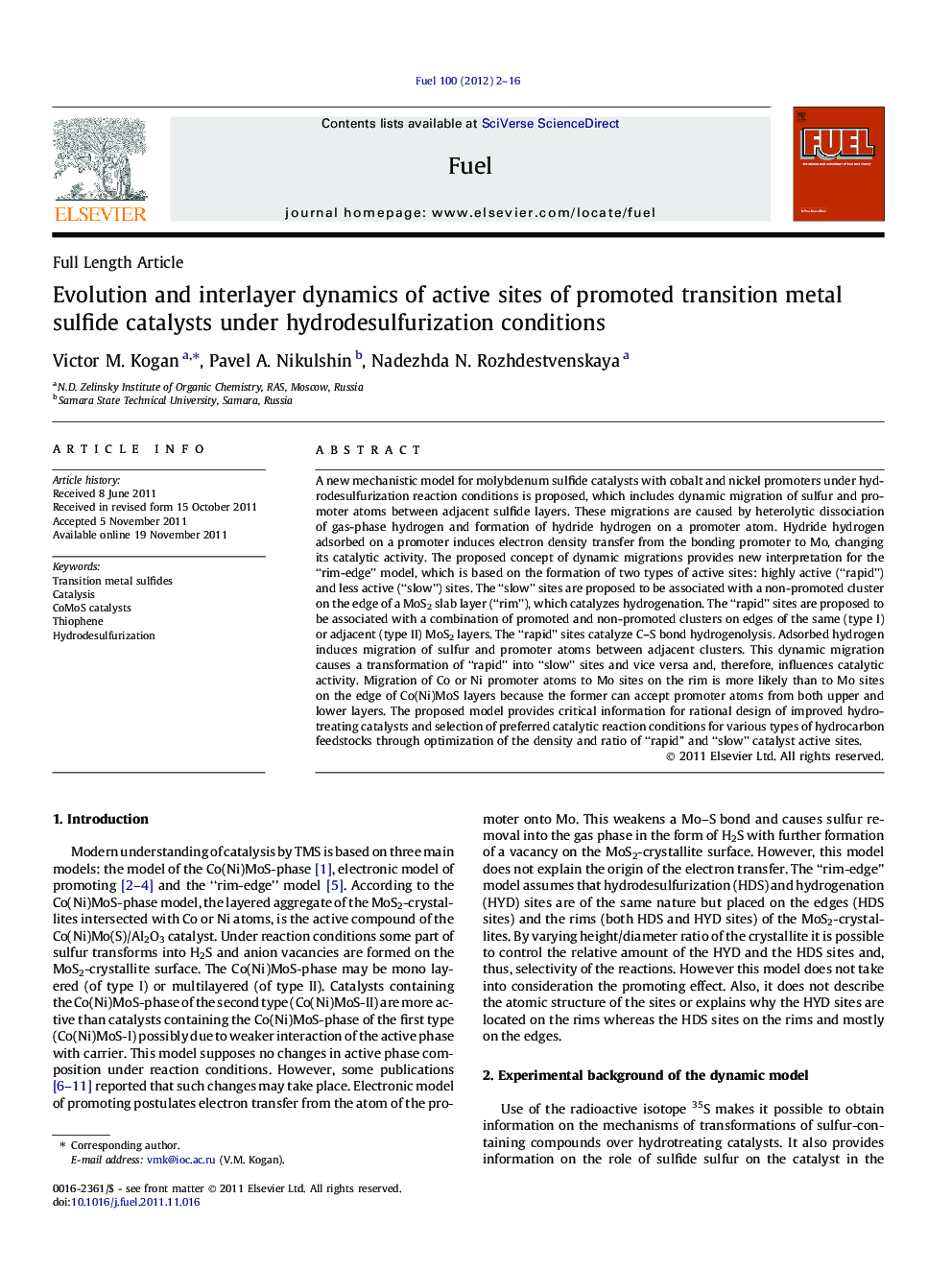| Article ID | Journal | Published Year | Pages | File Type |
|---|---|---|---|---|
| 206391 | Fuel | 2012 | 15 Pages |
A new mechanistic model for molybdenum sulfide catalysts with cobalt and nickel promoters under hydrodesulfurization reaction conditions is proposed, which includes dynamic migration of sulfur and promoter atoms between adjacent sulfide layers. These migrations are caused by heterolytic dissociation of gas-phase hydrogen and formation of hydride hydrogen on a promoter atom. Hydride hydrogen adsorbed on a promoter induces electron density transfer from the bonding promoter to Mo, changing its catalytic activity. The proposed concept of dynamic migrations provides new interpretation for the “rim-edge” model, which is based on the formation of two types of active sites: highly active (“rapid”) and less active (“slow”) sites. The “slow” sites are proposed to be associated with a non-promoted cluster on the edge of a MoS2 slab layer (“rim”), which catalyzes hydrogenation. The “rapid” sites are proposed to be associated with a combination of promoted and non-promoted clusters on edges of the same (type I) or adjacent (type II) MoS2 layers. The “rapid” sites catalyze C–S bond hydrogenolysis. Adsorbed hydrogen induces migration of sulfur and promoter atoms between adjacent clusters. This dynamic migration causes a transformation of “rapid” into “slow” sites and vice versa and, therefore, influences catalytic activity. Migration of Co or Ni promoter atoms to Mo sites on the rim is more likely than to Mo sites on the edge of Co(Ni)MoS layers because the former can accept promoter atoms from both upper and lower layers. The proposed model provides critical information for rational design of improved hydrotreating catalysts and selection of preferred catalytic reaction conditions for various types of hydrocarbon feedstocks through optimization of the density and ratio of “rapid” and “slow” catalyst active sites.
Graphical abstractFigure optionsDownload full-size imageDownload as PowerPoint slideHighlights► A new mechanistic model for TMS catalyst operating under HDS conditions is proposed. ► Migration of sulfur and promoter atoms between adjacent sulfide layers is supposed. ► The model gives a basis to evaluate catalyst efficiency in HDS of various crudes.
